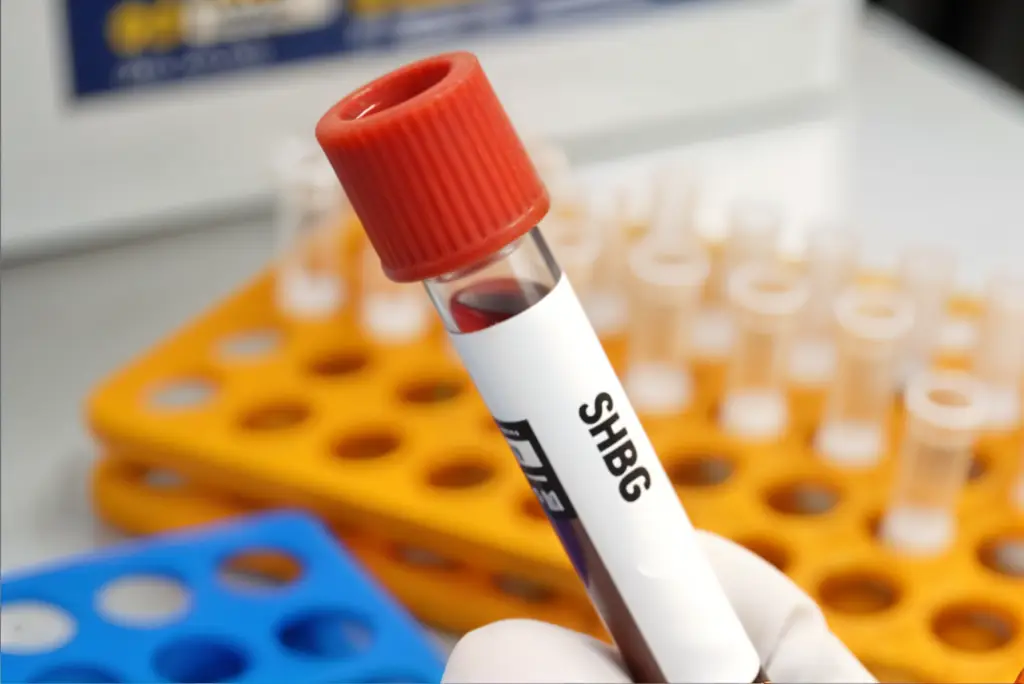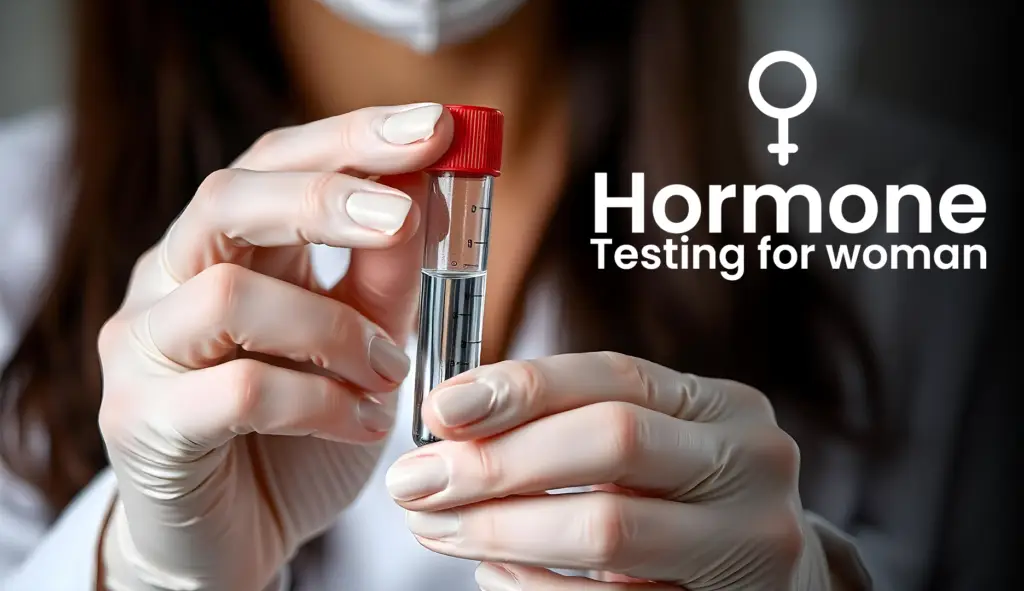Understanding Sex Hormone Binding Globulin High And Your Health

The sex hormone-binding globulin in your body provides excellent assistance in maintaining its balance in terms of hormones. The liver is the major organ for producing this protein, which combines specifically with certain hormones such as testosterone, dihydrotestosterone or DHT, and estradiol, which control the number of such molecules available for transfer to different tissues of the body. However, when SHBG is elevated, in particular, this leads to health problems and hormonal imbalances. Knowing why your sex hormone binding globulin high and how that impacts your life is important to help deal with the problem. SHBG plays an important role in regulating the body’s hormonal balance because it determines how much of “free” hormones is available to the body from the bloodstream. The free hormones affect vital processes like sexual development and reproductive health as well as overall health and well-being. High levels of SHBG would disrupt these essential processes, and there could be such symptoms as general fatigue, lowered libido, and, in extreme cases, infertility. Though both sexes can suffer from high SHBG levels, the causes and effects might be different. In this blog, we’ll delve deeper into what SHBG is, why high levels occur, and the potential health implications. Additionally, we’ll explore how SHBG levels are tested, interpreted, and managed. If you’re concerned about hormonal imbalances or suspect your sex hormone binding globulin high, this comprehensive guide will provide clarity and actionable insights to take charge of your health. What Is Sex Hormone Binding Globulin High? SHBG is one specific protein that binds to three crucial hormones: Testosterone: The primary male sex hormone but also present in females in relatively smaller amounts. Dihydrotestosterone (DHT): A very potent derivative of testosterone. Estradiol: A form of estrogen, the main female sex hormone. It limits exposure of the hormones to tissue. It therefore controls the quantity of hormone there as “active” and hence effective. The serum concentration of SHBG is influenced by factors such as sex, age, weight, genetic and general metabolic factors. Why Is Sex Hormone Binding Globulin High? The causes for high SHBG can be multifold. However, the leading causes include the following factors. Hyperthyroidism – Hyperactivity of the thyroid gland generates SHBG levels and disrupts hormonal activity. Pituitary Gland Disorders: The pituitary gland controls most processes involving hormones in the body. If that gland is malfunctioning, then it may lead to sex hormone binding globulin high levels. Addison’s Disease: Sex hormone binding globulin high levels occur when the adrenal glands do not produce enough hormones. Medications – Hormonal pills used in birth control, hormone replacement therapy, and others with estrogen will make sex hormone binding globulin high. Liver Disease: Since sex hormone binding globulin is produced in the liver, problems related to this organ can directly impact its levels in the blood. How Is SHBG Tested? The sex hormone binding globulin test is a blood test that evaluates the level of SHBG in your system. It can be done as part of your testosterone level check-up for better information on your hormone levels. When Is the Test Ordered? Doctors typically order this test if they suspect hormonal imbalances. In men, sex hormone binding globulin high levels can be an indicator of low free testosterone, while in women, sex hormone binding globulin high levels could be associated with excess testosterone, which is often associated with conditions such as polycystic ovary syndrome (PCOS). Factors Influencing Test Results Some lifestyle factors and medical conditions can influence sex hormone binding globulin test results: Medications or supplements Opioid or recreational drug use Eating disorders or extreme dieting What Are Normal SHBG Levels? SHBG levels can be very high depending on the age, sex, and medical condition. Typically, children will have higher SHBG levels as they grow. In adults, the physician bases the decision if your levels are normal on many factors such as symptoms and history. Health Implications of Sex Hormone Binding Globulin High Levels It also causes an imbalance in free and bound hormones when there is sex hormone binding globulin high, and it may cause several health conditions. Here are the disorders caused by a high SHBG level: Androgen Deficiency: It is caused by a high level of SHBG, and its effect will lower the level of free testosterone in men, which will cause the symptoms of weight loss, decreased muscle mass, and also low libido. Polycystic Ovary Syndrome (PCOS): In females, high levels of SHBG may indicate a hidden hormonal disorder such as PCOS, affecting fertility and menstruation. Infertility: Irregular SHBG levels may lead to problems in sex hormones and cause reproductive issues. Thyroid Conditions: An overactive thyroid may also lead to elevated SHBG, which further throws your hormones into disarray. Adrenal Insufficiency: High SHBG may be associated with dysfunction of the adrenal glands, interfering with your body’s response to stress and energy. Controlling Sex Hormone Binding Globulin High Levels If you get diagnosed with the condition and it’s due to high SHBG levels, then find what is causing your SHBG. Here are things you can control and, based on these controls, possibly lower abnormal SHBG level: Lifestyle Changes A diet that is loaded with whole, protein-rich and healthy fat-eating food maintains hormonal balance. Specific hormonal imbalances can be treated by hormone therapies or medications prescribed by your doctor. Normalization of SHBG levels can also be achieved by treating the underlying conditions such as thyroid disorders or adrenal insufficiency. Testing and Monitoring Regular testing through comprehensive panels such as The IV Lounge’s Women’s Hormone Panel or Men’s Hormone Panel can help track your SHBG levels and identify imbalances early. Take Charge of Your Hormonal Health with The IV Lounge Sex hormone binding globulin is one of the major regulators of hormonal balance in your body. The excessive level of SHBG disrupts the availability of required hormones and brings along with it various symptoms that negatively affect your overall health and wellness. Proper testing, lifestyle modifications, and medical interventions can restore the hormonal balance in your body
5 Essential Nutrients And Skinny Shot Injections For Weight Loss

Losing weight is quite challenging but rewarding. It involves a balance of diet, exercise, and the consumption of necessary nutrients. To many, the role that vitamins and minerals play in fostering metabolism and health can never be overlooked. There is one popular remedy to help increase people’s velocity, and it is through Skinny shot injections that involve vital vitamins and nutrients. These injections are specifically intended to support metabolic health, reduce body fat, and help improve overall well-being. Let’s discover five essential vitamins that can aid you in your weight loss quest. Learn how these vitamins are the best sources and get skinny shot injections as an extra helping hand to reach those healthy goals. Why Vitamins Are Fundamental For Weight Loss? Vitamins and minerals are integral to the functioning of metabolism in the body. Most of the difficulties encountered in losing weight stem from a deficiency in critical micronutrients, which causes an imbalance in metabolism and hormonal levels. Deficiencies of critical vitamins are addressed in skinny shots, which use injections that bypass the digestive barriers to promote optimal absorption through the bloodstream. In today’s fast world, where more than 73% of Americans are overweight or obese, according to the CDC, this is the greatest period in need of efficient weight loss methods. Thin shot injections represent a modern approach to a common issue faced by people, providing a safe and effective method for achieving weight loss goals. 1. B Vitamins: The Metabolism Powerhouse B vitamins play a role in the energy from food and macronutrient metabolism. They also help maintain a healthy metabolism and body fat distribution. Higher dietary intake of vitamins B1, B2, B6, and B9 is associated with lower obesity and visceral fat. Sources of B Vitamins: Animal-based: Meat, eggs, poultry, and dairy Plant-based: Leafy greens, legumes, nuts, seeds, and fortified cereals Supplementation Tip: Since they are water-soluble and heat-sensitive, B vitamins can be destroyed when cooked. Injections of skinny shots with B complex vitamins offer an efficient alternative that guarantees the entry of much-needed nutrients into the bloodstream. 2. Vitamin D. It Increases Fat Metabolism Vitamin D is an essential nutrient because it regulates the synthesis of fat cells, increases sensitivity to insulin, and ensures lipid metabolism. It also enhances muscle function, which helps burn calories and lose weight. Sources of Vitamin D: Natural: Sunlight Fatty fish and fish-liver oils Egg yolks Mushrooms Fortified: Milk Orange juice Cereals Supplementation Tip: Vitamin D oral supplements may not work well for people who have a high BMI because of fat storage. Vitamin D is injected into the bloodstream through skinny shots, thus eliminating the problem of fat storage that leads to poor utilization. 3. Vitamin C: Antioxidant and Appetite Regulator Vitamin C is an antioxidant that can fight oxidative stress, support collagen synthesis, and increase the release of serotonin, the hormone responsible for regulating appetite. Adequate vitamin C supplementation can, therefore, help decrease cravings and promote weight management. Sources of Vitamin C: Citrus Fruits, strawberries, Bell Peppers, Spinach, Broccoli, and Fortified Juices are rich sources of Vitamin C. Recommend Individuals with higher BMIs may require higher dosages of vitamin C to achieve its health benefits. Digestive problems are likely issues for them. IV therapy is specifically provided through shots like skinny injections to ensure better absorption, which leads to effectiveness. 4. Magnesium – Enhancement of Blood Sugar Control Magnesium is very important for maintaining blood sugar levels, relaxing muscles, and hydration. It also plays a role in sleep; therefore, a deficiency may inhibit metabolism and weight loss. Natural Sources These include cruciferous vegetables and whole grains, legumes and seeds. Supplements-Antacids and Electrolyte powders Supplementation Tip: Those with gut conditions or who are taking some prescriptions will appreciate magnesium via skinny shot injections, which assure proper absorption and metabolic health. 5. Zinc-Increasing Insulin Sensitivity and Immune Function Zinc is a trace mineral that plays a role in more than 100 enzymatic actions, including insulin action and immunity. It also contributes to the regulation of blood sugar, which can affect hunger and fat storage. Food Sources of Zinc Animal-based: Oysters, beef, crab, pork, and turkey. Plant-based: Pulses like lentils, pumpkin seeds, fortified breakfast cereals, and peanuts Supplementation Tip: Zinc absorption might be poor in plant-based diets or due to digestive disorders. Snack shot injections can pump the required level of zinc for weight loss and overall health. Why Skinny Shot Injections Are a Game-Changer? Unlike oral supplements taken traditionally, skinny shot injections ensure a direct and efficient means to deliver the body with the required vitamins and nutrients. They bypass the digestive system, meaning that while nutrients remain to be absorbed at a higher rate, they get utilized adequately within the body. Such makes them fit for people with dietary restrictions, absorption challenges, or who are in a hurry to experience results fast. Main Advantages of Skinny Shot Injections: Boost metabolism and energy. Fats are being burned, and the viscera fat melts away. Muscle repair begins and grows. Appetite is controlled, and mood is elevated Targeted nutrient delivery system with minimal waste Who Would Benefit From Skinny Shot Injections? Skinny shot injections may be administered to anyone along the weight loss journey. Whether starting out or having gone as far as possible but reaching a plateau, these injections can provide the needed metabolic muscle to push through barriers and achieve goals. Those suffering from vitamin deficiencies. Individuals struggling with slow metabolism. Individuals having a higher BMI. Those searching for a non-invasive aid in weight loss. However, one must first consult a physician to ensure what they are getting into will not interfere with their health needs or weight reduction plan. A Boost for Your Wellness Journey with Skinny Shot Injections It is a marathon, not a sprint, and every step counts. Therefore, making sure that your diet includes the necessary vitamins, such as B complex, vitamin D, magnesium, zinc, and vitamin C, will help you optimize
Hormone Testing for Women

Hormone health plays a pivotal role in a woman’s overall well-being. From regulating metabolism and mood to managing menstrual cycles and fertility, hormones are integral to many bodily functions. Understanding your hormone levels through testing can help detect imbalances early, leading to better health management and improved quality of life. In this blog, we are going to discuss the importance of hormone testing for women, their types, when to undergo female hormone tests, and interpreting the results. Why Hormone Testing for Women is Essential? Hormone testing for women is crucial for several reasons: Early Detection of Imbalances: Hormone imbalances can manifest in various ways, such as fatigue, weight changes, mood swings, and irregular menstrual cycles. Early detection through hormone testing allows for timely intervention and management. Monitoring Health Conditions: Conditions like polycystic ovary syndrome (PCOS), thyroid disorders, and menopause significantly impact hormone levels. Regular testing helps monitor these conditions effectively. Managing Reproductive Health: Hormone testing for women is vital for those trying to conceive, as it provides insights into fertility and identifies potential issues that could affect pregnancy. Types of Hormone Tests for Women There are several types of hormone assays that are currently available to measure various facets of women’s health. Here’s a comprehensive female hormone test list: Thyroid Function Tests The thyroid gland can be described as a small butterfly-shaped gland located in the neck; it releases hormones that govern metabolism, energy generation or utilization, and other functions in the body. Common thyroid tests include: TSH (Thyroid Stimulating Hormone): Used in women hormone tests to determine the ratios of TSH in the body to check the function of the thyroid. Free T4 (Thyroxine): A test that measures the utilizable or free form of thyroxine hormone. Free T3 (Triiodothyronine): Its main function is to record the concentration of triiodothyronine in the bloodstream. Reproductive Hormone Tests These tests are crucial for evaluating fertility and menstrual health: FSH (Follicle-Stimulating Hormone): It helps to maintain the menstrual cycle and the development of eggs in the fecundated ovaries. LH (Luteinizing Hormone): This helps in the management of ovulation and menstrual cycle to occur. Estrogen: Estrogens are a kind of hormones that play a role in female reproduction and female sex characteristics; this test helps to assess their concentrations in the body. Progesterone: It is used mainly to assess the health of ovulation and menstruation. Prolactin: High levels can affect menstrual cycles and fertility. Adrenal Function Tests The adrenal glands produce hormones that help the body respond to stress and regulate metabolism: Cortisol: It is known commonly as the stress hormone, playing the role of managing blood sugar levels and metabolism while also suppressing inflammation. DHEA-S (Dehydroepiandrosterone sulfate): A class of compounds related to sex hormones and necessary for proper functioning as hormones. Sex Hormone Tests These female hormone tests list evaluate overall hormonal balance and reproductive health: Testosterone: Aids in increasing sex drive and maintaining bone density in women. SHBG (Sex Hormone Binding Globulin): It is involved in binding to sex hormones and can modulate the availability of the sex hormones. Understanding Your Hormone Test Results It is quite difficult to interpret the results of a female hormone test all on your own, and usually, it is better to consult with a healthcare provider. Here’s what you can generally expect from common hormone tests: Thyroid Function Tests: TSH concentrations are normally expected to fall between ranges of 0. 4 to 4. 0 mIU/L. Any deviation from the mentioned normal range may depict hypothyroidism or hyperthyroidism. FSH and LH: Estrogen levels fluctuate depending on the phase of the menstrual cycle. Raised FSH and or LH levels may be used for diagnosing menopausal status or ovarian failure. Estrogen and Progesterone: Another aspect that indicates variation is the level of cortisol, which also changes with the menstrual cycle. Abnormally low concentration of estrogen suggests menopausal status of a woman, while high concentration might suggest polycystic ovary syndrome (PCOS) conditions. Cortisol: Normal levels of this enzyme rise towards the morning and then gradually diminish during the day. Another group can signal adrenal insufficiency or Cushing’s syndrome. Testosterone: Normal levels of TNF alpha in women have been observed to be lower than those fixed for men. Basically, a high amount in the blood might indicate the presence of PCOS or adrenal gland conditions. When to Consider Hormone Testing? Hormone testing for women is recommended under several circumstances: Irregular Menstrual Cycles: In case of a dry, abnormal, heavy, or absent period, hormonal testing will be useful in determining the cause. Symptoms of Menopause: When it comes to the onset of menopause or perimenopause, hot flashes, night sweats, and mood swings may signal an early warning. Infertility: In the case of infertility, simple hormone tests can be beneficial to couples since they may indicate the reproductive health of the couple. Unexplained Weight Changes: Weight gain or loss, especially when it happens all of a sudden, can be an indication Persistent Fatigue or Mood Swings: These can be symptoms of thyroid disorders or other hormonal problems. To Sum Up… A lot of women may not agree with this, but hormone testing for women is a great way of ensuring they are healthy. Therefore, to promote good health, ensure you pay close attention to your hormones and ensure they are in good condition whether you want to treat irregular periods, deal with or boost fertility, or manage the symptoms of menopausal periods. Common check-ups with a doctor and self-examinations provide a convenient way of making sure you are informed and capable of making the best decisions regarding your health condition. Women must undergo hormone testing as an essential means of keeping track of their health status. Knowing your hormonal status, you can take measures to improve your health condition in case of irregular menstruation, symptoms during the menopausal period, or for increasing fertility. Routine screening and check-ups also allow you to be knowledgeable about your current state and possible
Rediscover Strength at 40+ with a Testosterone Level Test

If you are a man over 40 experiencing a decline in energy, strength, or overall vitality, it might be time to consider testosterone replacement therapy (TRT). At IV Lounge, we offer comprehensive men’s hormone panels and TRT services to help you reclaim your optimal health and well-being. But what exactly is testosterone, and why is it so crucial for men? What is Testosterone? Testosterone is a hormone primarily produced by men and women. Although men have significantly higher levels. This hormone is essential for developing and maintaining the male reproductive system, muscles, bones, and skin. It plays a crucial role in performance and the development of male characteristics, such as facial hair and a deeper voice. Testosterone also helps maintain muscle mass, bone density, and overall strength as you age. How Does Testosterone Affect Your Health? When your body produces less testosterone than it needs, you may experience a range of symptoms, including: Reduced muscle mass and strength: Low testosterone can make it difficult to maintain muscle, leading to feelings of fatigue and weakness. Decreased energy and concentration: You might find it harder to focus or stay energized throughout the day. Sleep problems: Low testosterone can interfere with your sleep patterns, making it difficult to get a good night’s rest. Erectile dysfunction and low libido: Performance and desire can be significantly affected. Hot flashes and decreased bone density: These symptoms are less commonly associated with men but can still occur. Increased risk of cardiovascular illnesses and diabetes: Low testosterone levels are linked to higher chances of these conditions. Moreover, testosterone is associated with better memory, learning, and problem-solving abilities. It helps you focus, reduces stress, and improves your mood. As men age, a natural decline in testosterone levels occurs, a process known as “andropause” or “male menopause,” which can make these symptoms more pronounced over time. Symptoms of Low Testosterone Recognizing the symptoms of low testosterone is the first step toward improving your health. Common signs include: Low libido: A reduced interest in intimacy. Erectile dysfunction: Difficulty achieving or maintaining an erection. Loss of muscle mass: This can lead to fatigue and weakness, particularly noticeable if you struggle with activities that used to be easy. Persistent fatigue: Feeling tired all the time, despite adequate sleep and a good diet. Difficulty concentrating: Challenges with focus and mental clarity. How to Get TRT? Testing for low testosterone is straightforward at IV Lounge. If you want to know how to get TRT, then you can schedule an appointment online for a blood draw at your preferred location. During your visit, our team will conduct a comprehensive men’s hormone panel to determine your testosterone levels. If testosterone test results indicate low testosterone levels, we can connect you with one of our recommended hormone specialists. In some cases, our doctor may prescribe testosterone replacement therapy, which has been shown to enhance overall cognition and potentially reduce the risk of dementia in individuals with low testosterone and memory complaints. Benefits of Testosterone Replacement Therapy TRT therapy offers numerous benefits, including: Increased muscle mass and strength: Helping you regain physical performance and reduce feelings of fatigue. Enhanced energy and concentration: Improving your ability to stay focused and energized throughout the day. Better sleep: Helping you achieve more restful and restorative sleep. Improved performance and libido: Enhancing your overall quality of life. Reduced risk of cardiovascular and metabolic diseases: Supporting your long-term health and well-being. Choose IV Lounge for Testosterone Replacement Therapy At IV Lounge, we prioritize your health and well-being. Our team of experienced professionals is dedicated to providing personalized care tailored to your needs. Our comprehensive men’s hormone panel and TRT services are designed to help you achieve optimal health and vitality. Reclaim Your Health with IV Lounge TRT Services If you are over 40 and experiencing symptoms of low testosterone, it is time to take action. IV Lounge offers comprehensive men’s testosterone replacement therapy services to help you reclaim your energy, strength, and overall well-being. Our team of experts is here to guide you every step of the way, from initial testing to personalized treatment plans. Don’t wait any longer. Schedule your testosterone test with IV Lounge today and start living your life to the fullest. Contact us now at (877) 420 0052 or visit our website to book your appointment. Your journey to better
Why You Should be Getting Cold & Hot: Sauna and Cold Plunges

Why You Should be Getting Cold & Hot: Sauna and Cold Plunges Introduction You most likely have heard about saunas, steam rooms, cold plunges, ice baths, or other temperature controlled environments within wellness centers as they have gained popularity in recent years. But, why are these treatments gaining popularity? How do we know which treatment is right for us? Can these these treatments be used together within a wellness regimen? We are here to answer these questions! Why Cold Therapy? Cold therapy is a natural, effective way to reduce inflammation, boost immunity, improve your cognitive function, aid in better sleep, and enhance energy in daily life. It’s also been shown to help athletes recover faster, which is why many professional athletes use it as part of their training regimen. But cold therapy isn’t just for the pros—you can reap benefits from it too. Inflammation is the body’s response to injury or infection. It’s important because it may help prevent further damage and lead to muscle development, but it can also cause pain and stiffness for an over-extended period of time. Cold therapy reduces inflammation by constricting blood vessels within the muscles, in turn reducing swelling and pain. Immunity refers to the body’s ability to fight off viruses and bacteria that make you sick. White blood cells are produced by the body to fight infections, cold therapy stimulates the production of these cells. Lymph nodes filter out bacteria from your blood and when the body experiences an immersion in the cold, the lymphatic system contracts and drains. So, by improving circulation and boosting various parts of our immune system, we can improve our overall health and potentially prevent infection! Cold Water Plunges The best way to start a cold plunge is by getting into an ice bath or a pool with cold water and staying there for a few minutes, or the length you have been recommended by your medical doctor. We will cover the specifics of starting your cold plunge journey at home: Ice Baths – In this method, you sit or lie in a tub of ice water (usually 10-20 degrees Fahrenheit) for 3 to 15 minutes while wearing minimal to no clothing The goal is to get as much surface area as possible exposed to the freezing temperature so that every part of your body is equally saturated. Cold Showers – This method uses running water instead of a full body immersion; however, cold showers are still effective at providing anti-inflammatory effects and may be more convenient for the general population. After your shower at your preferred temperature, you can simply turn your faucet to the coldest setting and rinse for at least 2 minutes. Why Hot Therapy? Heat therapy is a great way to stimulate the body’s natural healing and recovery processes. Heat treatments have been used for centuries to treat injuries, as well as other disorders including arthritis and bursitis. Similar to cold therapy, heat brings blood flow into inflamed areas. Heat-Shock Proteins (HSPs) are proteins that are produced to help repair damaged cells. They’re triggered by exposure to heat, which is why they’re often referred to as “heat shock proteins.” They aid in muscle growth and recovery as well as reducing inflammation. In addition to HSPs, heat treatment can also promote muscle growth by increasing protein synthesis (the process by which muscle tissue builds). This effect is most pronounced when combined with resistance training; however it can still be beneficial even if you’re not working out! We recommend entering a sauna at 165 degrees fahrenheit, and sitting for 10 to 15 minutes. This is an excellent way to recover after a workout or from a stressful day. If you do not have access to a sauna at your local gym or recreation center, try taking a warm shower and sitting in the steam for an extended period of time! Contrast Therapies (alternate between hot and cold treatments) Contrast therapies re a great way to maximize recovery and recovery time. You can use contrast therapy for a variety of conditions including: muscle fatigue or soreness, arthritis pain, sprains and strains, or autoimmune responses. To use contrast therapy at home, simply alternate between hot and cold baths or showers for about 10 minutes at a time, ending your alternations with the cold shower. In a wellness center setting, we would highly recommend spending a few minutes in a cold plunge, then alternating to the sauna for 15 minutes, before returning to the cold plunge and ending the experience there. For optimal results, complete this regimen after a high intensity workout! So, what are you waiting for? Get started on your hot and cold therapy journey today!
Personalized 90 Day Wellness Reboot Weight Loss Program

Achieve Your Weight Loss Goals with Our 90-Day Program Embarking on a 90-day wellness exercise program for weight loss is a transformative journey that can significantly improve your health, fitness, and overall well-being. This comprehensive guide will provide you with a detailed plan, including effective exercises, dietary tips, and essential lifestyle changes to help you achieve your weight loss goals. The 90-Day Exercise Program Before diving into the specifics of the 90-day program, it’s crucial to set clear and realistic goals. Aiming to lose 1-2 pounds per week is a healthy and achievable target. Over 90 days, this translates to a weight loss of approximately 12-24 pounds. Beyond just weight loss, focus on other aspects such as improved stamina, muscle tone, and overall energy levels. Importance of a Balanced Approach A successful weight loss journey requires a balanced approach that includes a combination of cardiovascular exercises, strength training, flexibility exercises, and a healthy diet. Each component plays a vital role in helping you lose weight and maintain muscle mass, which is crucial for long-term success. Phase 1: Building a Foundation (Weeks 1-4) 1. Cardio Workouts: Start with moderate-intensity cardiovascular exercises to boost your heart rate and kickstart fat burning. Brisk Walking or Jogging: 30 minutes, 5 days a week. Cycling: 30-45 minutes, 3 days a week. Swimming: 30 minutes, 2 days a week. 2. Strength Training: Focus on full-body workouts to build muscle and increase metabolism. Bodyweight Exercises: Push-ups, squats, lunges, and planks. Perform 3 sets of 10-15 reps each. Resistance Band Workouts: Include exercises like bicep curls, tricep extensions, and shoulder presses. 3. Flexibility Training: Incorporate stretching and yoga sessions to improve flexibility and prevent injuries. Yoga: 30 minutes, 2 days a week. Dynamic Stretching: 10 minutes before workouts. Phase 2: Increasing Intensity (Weeks 5-8) 1. Cardio Workouts: Increase the intensity and duration of your cardio sessions. Interval Training: Alternate between 1 minute of high-intensity running and 2 minutes of walking for 30 minutes, 3 days a week. Spinning Classes: 45 minutes, 2 days a week. Rowing: 30 minutes, 2 days a week. 2. Strength Training: Progress to more challenging strength training exercises and increase the weight or resistance. Compound Movements: Deadlifts, bench presses, and pull-ups. Perform 3 sets of 8-12 reps each. Circuit Training: Combine different exercises with minimal rest in between to keep your heart rate up. 3. Flexibility Training: Continue with regular stretching and yoga sessions to aid in recovery and maintain flexibility. Yoga: 45 minutes, 2 days a week. Static Stretching: 10 minutes after workouts. Phase 3: Maximizing Results (Weeks 9-12) 1. Cardio Workouts: Incorporate high-intensity interval training (HIIT) to maximize calorie burn. HIIT Workouts: 20-30 minutes, 3 days a week. Include exercises like burpees, mountain climbers, and high knees. Long-Distance Running: 45-60 minutes, 2 days a week. Cardio Kickboxing: 45 minutes, 2 days a week. 2. Strength Training: Incorporate advanced techniques to further challenge your muscles. Supersets: Pair two exercises back-to-back with no rest in between. Perform 4 sets of 10-12 reps each. Drop Sets: Start with heavy weights and decrease the weight after each set until failure. 3. Flexibility Training: Maintain flexibility and support muscle recovery with continued stretching and yoga. Power Yoga: 60 minutes, 2 days a week. Foam Rolling: 10 minutes after workouts. Weight Loss Tips for 90-Day Exercise Program Here is a list of tips for 90-day weight loss program: Nutritional Guidelines A balanced diet is essential for weight loss and overall health. Focus on the following: 1. Macronutrients Proteins: Essential for muscle repair and growth. Include sources like lean meats, fish, eggs, beans, and legumes. Carbohydrates: Opt for complex carbs like whole grains, fruits, and vegetables for sustained energy. Fats: Incorporate healthy fats from avocados, nuts, seeds, and olive oil. 2. Meal Planning Plan your meals to ensure you are getting the right balance of nutrients and avoiding unhealthy snacking. Breakfast: Start your day with a protein-rich meal. Example: Scrambled eggs with spinach and whole-grain toast. Lunch: A balanced meal with lean protein, complex carbs, and vegetables. Example: Grilled chicken breast with quinoa and steamed broccoli. Dinner: Keep it light but nutritious. Example: Baked salmon with sweet potato and a side salad. Snacks: Healthy options like Greek yogurt with berries, a handful of nuts, or carrot sticks with hummus. Hydration: Staying hydrated is crucial for weight loss. Aim to drink at least 8 glasses of water a day. Hydration helps regulate your metabolism, aids digestion, and can help control your appetite. Dealing with Cravings Cravings can derail your progress if not managed properly: Healthy Substitutes: Opt for healthier alternatives to satisfy cravings. Mindful Eating: Practice mindful eating to enjoy your food and recognize when you’re full. Stay Hydrated: Sometimes, thirst is mistaken for hunger. Drink water before reaching for a snack. Lifestyle Changes Sleep and Recovery Getting enough sleep is crucial for weight loss and overall health. Aim for 7-9 hours of quality sleep each night. Proper sleep supports muscle recovery, regulates hormones, and keeps you energized for your workouts. Stress Management Stress can hinder your weight loss efforts by increasing cortisol levels, which can lead to weight gain. Incorporate stress-reducing activities such as meditation, deep breathing exercises, and hobbies you enjoy. Consistency and Patience Consistency is key to achieving your weight loss goals. Stick to your exercise routine, follow your diet plan, and make healthy lifestyle choices consistently. Be patient with yourself and understand that weight loss is a gradual process. Hitting a Plateau It’s common to hit a plateau during weight loss. If this happens: Adjust Your Diet: Reevaluate your calorie intake and macronutrient distribution. Change Your Workout Routine: Introduce new exercises or increase intensity to challenge your body. Stay Patient: Remember that plateaus are temporary and part of the process. Tracking Progress Monitor Your Progress Regularly track your progress to stay motivated and make necessary adjustments. Weekly Weigh-Ins: Weigh yourself at the same time each week. Body Measurements: Take measurements of your waist, hips, thighs, and arms every two weeks. Progress Photos: Capture photos at
4 Daily Health Tips You Need To Boost You Well-Being

Maintaining optimal health and well-being can be challenging in our fast-paced lives. Our health and well-being often take a backseat as life’s responsibilities consume most of our time. However, integrating a few simple habits into your daily routine can make a significant difference. In this blgo, we are going to discuss four tips to enhance your health and well-being every day. Four Tips for Optimal Well-being Here are four essential daily health tips to boost your well-being and help you live a healthier, happier life. 1. Embrace Sun Exposure Sun exposure is crucial for our health, and it’s important to get at least 15 to 30 minutes of sunlight daily. Sunlight helps your body produce Vitamin D, which is essential for overall well-being. Why do you need Vitamin D from sun? Vitamin D deficiency can lead to bone-related issues like osteoporosis. Research suggests that adequate Vitamin D can also help prevent seasonal affective disorder (SAD), reduce the risk of certain cancers, lower blood pressure, and improve mood. Getting your daily sunlight in the morning can boost alertness, enhance productivity, and support a healthy circadian rhythm. Start Your Day with Sunshine Begin your day with a little sunshine to boost your Vitamin D levels, enhance your mood, and support overall health. If you can’t get enough sun, consider supplementing with IV Lounge Vitamin D shots. 2. Focus on Conscious Nutrition Whole, nutrient-dense foods are vital for optimal physical, mental, and emotional well-being. Whole foods are unprocessed, like fruits, nuts, and fish, while nutrient-dense foods provide a high amount of nutrition relative to their calorie content. Prioritize Whole Foods Incorporate whole foods into your diet. For instance, salmon is a nutrient-dense food rich in omega-3 fatty acids. Eating meals that consist of such foods can reduce the risk of chronic health conditions, enhance cognitive processes, balance hormones, and prevent micronutrient deficiencies. Start with a Healthy Breakfast Eating a healthy breakfast within one hour of waking can boost your metabolism, provide the energy needed for the day, balance blood sugar levels, and improve cognitive function. A nutrient-dense breakfast can set a positive tone for the rest of the day. 3. Practice Daily Reflection Reflection is a powerful tool for well-being. It helps you identify your emotions, areas for improvement, solutions to current issues, and new creative ideas. Simple Reflection Practices Reflecting on your day can be as simple as asking yourself, “How did I feel today?” or specific questions about your activities, such as “What made me smile?” or “What could I have done differently?” Track Your Progress A daily reflection practice ensures you stay proactive in your life and helps make larger goals seem more attainable. Consistently checking in with yourself fosters self-awareness and personal growth. 4. Incorporate Movement Regular movement is key to health, happiness, and well-being. Simple activities like a 10-minute walk or stretching during the workday can make a significant difference. Aim for Daily Exercise Try to engage in at least 30 minutes of exercise each day. Incorporate various styles of exercise like aerobics, cardio, and strength training to enhance overall fitness. Exercise helps you feel more energized, less stressed, and improves sleep quality. Benefits of Regular Movement Movement helps build muscle tone, increase blood flow, support major organ functions, aid in joint health, and prevent injury over time. Prioritize daily movement to maintain optimal well-being. Enhance Your Well-being with Daily Habits Incorporating these four tips into your daily routine can significantly enhance your overall well-being. Prioritizing sun exposure, conscious nutrition, daily reflection, and regular movement are foundational steps toward a healthier, happier life. Remember, small, consistent changes lead to significant improvements over time. At IV Lounge, we are committed to supporting your journey to optimal well-being. Our Master Cocktail IV therapy provides a blend of essential nutrients to boost your health and energy levels. This service, administered by our expert team, is designed to enhance your well-being efficiently and effectively. Start your journey to better well-being today! Schedule a consultation with our wellness experts at IV Lounge and discover how our Master Cocktail IV therapy can help you achieve your health goals. Contact us now at (877) 420-0052 or visit our website to book your appointment. Your well-being journey starts here.
5 Best Simple Exercises for Women

5 Effective Exercises for Women to Build Muscle Strength Building muscle strength is crucial for women looking to enhance their overall fitness, improve balance, and increase endurance. If you’re new to the gym or seeking to refresh your workout routine, starting with simple yet effective exercises is the best approach. This guide highlights five exercises for women that are perfect for a full body workout, requiring minimal equipment and space. These exercises—squats, lunges, planks, pushups, and deadlifts—target key muscle groups, boost heart rate, and can be easily integrated into any strength training regimen. Whether done as a complete regimen or as a supplement to other workouts, these exercises will help you build muscle strength and achieve your fitness goals. Let’s dive into these simple yet effective exercises that will boost your muscle strength and overall fitness. 5 Best Exercises for Women If you’re new to the gym and wondering where to start, these five exercises for women are perfect for strengthening your entire body with minimal equipment or space. They can be done as a complete regimen in one day or as a supplement to other workouts. 1. Squats Squats are an excellent exercise for building strength in your legs, back, and core. This fundamental movement is not only essential for strength training but also has practical applications in daily life. Mastering the squat can help you maintain a healthy and strong body. How to Perform a Squat: Stand with your feet shoulder-width apart and toes slightly pointing outwards. Ensure your knees are in line with your toes. Lower yourself into a squat position until your thighs are parallel to the floor. Aim to reach the lowest point safely. For a lighter workout, rise immediately after completing the squat. For added challenge, hold the squat position for five seconds before rising. Squats can be done without weights (bodyweight squats), with a single kettlebell, or with a barbell using a squat rack. Aim to do squats three times a week. Use a 5×5 method for weighted squats (five squats for five sets) and a 4×8-12 method for bodyweight squats (eight to twelve squats for four sets). 2. Lunges Lunges are a quintessential lower body exercise that targets the quads, glutes, and the rest of your lower body. They also strengthen your core, improve balance, and increase hip flexibility. Variations of Lunges: Forward Lunge: Keep an upright torso while extending one leg forward and the other leg straight behind you. Reverse Lunge: Similar to a forward lunge but stepping back with one leg straight behind you before bending into a squat position. Walking Lunge: Hold dumbbells in your hands or on your shoulders and complete lunges as you walk forward. Incorporating lunges into your routine can significantly improve your overall strength and stability. 3. Planks Planks are an excellent exercise for strengthening the core, improving balance, and developing abdominal muscles. How to Perform a Plank: Start by lying on your stomach with both palms on the floor under your shoulders. Lift yourself up so that only your forearms and toes touch the ground, forming a straight line from head to heels. Hold this position for as long as possible, starting with 30 seconds and gradually increasing the duration. Planks can be done without weight training or with added resistance by placing a weight on your upper back. 4. Pushups Pushups are great for working multiple parts of the body, including the chest, shoulders, and triceps. They are versatile and can be done anywhere. How to Perform a Pushup: Assume a plank position on your hands and toes, with hands shoulder-width apart and elbows close to your sides. Bend your elbows until they reach 90 degrees perpendicular to the floor. Return to the starting position by pushing up onto your toes. For an easier variation, perform push ups with your knees on the ground. Aim to complete sets of 10 repetitions, increasing the number as you gain strength. 5. Deadlifts Deadlifts are a compound exercise that works the lower body, core, and arms. They are highly effective for building overall strength and muscle mass. Deadlifts can be performed with dumbbells or a barbell. How to Perform a Deadlift: Stand with your feet hip-width apart, with a barbell or dumbbells in front of you. Bend at your hips and knees to lower your torso and grasp the weights. Lift the weights by straightening your hips and knees until you are standing upright. Lower the weights back to the ground with control. Deadlifts are powerful for strength training, but proper form is crucial to avoid injury. Make sure to watch instructional videos if you’re new to this exercise. Conclusion: Elevate Your Workout Routine Incorporating these five simple exercises for women into your routine can significantly enhance your muscle strength and overall fitness. Squats, lunges, planks, pushups, and deadlifts provide a comprehensive full-body workout that can be done with minimal equipment. Remember, consistency is key to seeing results, so aim to integrate these exercises regularly into your full body workout regimen. To further enhance your muscle strength and recovery, consider our Strength and Recovery Cocktail IV and Muscle Shot for Women at the IV Lounge. These treatments are specially formulated to support muscle health, boost endurance, and aid in recovery. Schedule your appointment today and experience the benefits of enhanced muscle strength and quicker recovery.
NAD+ IV Therapy: Is This the Secret to Anti-Aging?

As you age gracefully, there are certain guidelines that you should follow so that you can remain physically as well as mentally healthy. However, it is impossible to feel this way, if one is completely exhausted by daily work and hustle and bustle. IV management is a new approach to solving the problem of exhaustion at the cellular level to obtain energy at the worst possible moment. NAD+ IV is an antiaging IV therapy backed by scientific evidence and an unproven method for treating addiction designed to increase the NAD+ levels in human body. It helps to feel rejuvenated and get your mind and energy back. Let’s discuss the NAD+ IV therapy, its benefits, and why we should opt for it. What is NAD IV Therapy? NAD or Nicotinamide Adenine Dinucleotide is an essential coenzyme found in living cells and organisms and often constitutes a dynamic component in redox reactions. However, NAD+ is high during the youthful stage as compared to old age when it has a reduced capacity to produce energy. Our cells’ energy levels can be boosted when the NAD+ levels are elevated and normalized through a drip. This compound is present in every cell of the human body. It provides the energy necessitated by the mitochondria to metabolize food and other essentials for the functioning of bodily processes. NAD+ is also involved in the process of nutrient redirection from food to the tissues in the human body and other living organisms and helps support proper DNA health. Benefits of NAD+ IV Therapy NAD+ IV therapy provides numerous health benefits by increasing the levels of this vital coenzyme in your body. Here are some key advantages: Overcoming Fatigue: NAD+ IV therapy helps supply energy at the cellular level, combating fatigue and promoting overall vitality. Enhancing Brain Function: By supporting mitochondrial biogenesis and protecting cells from toxins and damage, NAD+ maximizes cognitive function and mental clarity. Promoting Cell Regeneration: NAD+ aids in cell repair and regeneration, crucial for healing from injuries and maintaining healthy tissues. It activates poly ADP-ribose polymerases (PARPs), which help repair damaged DNA. Slowing Aging: NAD+ IV therapy can slow the aging process by activating sirtuin enzymes, which regulate genes associated with aging, fat storage, and blood sugar management. Addiction Support: NAD+ therapy is becoming a key component in addiction rehabilitation programs, helping reduce withdrawal symptoms, lessen cravings, and improve overall health during recovery. How NAD+ IV Therapy Works NAD+ IV therapy involves infusing a solution of NAD+ directly into your bloodstream. This method ensures rapid absorption and immediate availability of the coenzyme to your cells, bypassing the digestive system where oral supplements might lose potency. At Rocky Mountain IV Medics, we offer in-home NAD+ IV infusions, providing the treatment in the comfort of your home, office, or hotel. Our team of experienced nurses and paramedics will: Assess your symptoms and check your vital signs. Determine the best IV therapy for your needs. Administer the NAD+ IV infusion, which typically takes 30 to 45 minutes. NAD+ and Aging Research suggests that boosting NAD+ levels can reverse some signs of aging and lower the risk of chronic diseases such as Alzheimer’s, heart disease, diabetes, and vision loss. As NAD+ is essential for cellular health and repair, maintaining its levels through IV therapy can help preserve youthful energy and function. Experience Rejuvenation with NAD+ IV Therapy at IV Lounge NAD+ Cocktail IV Therapy is a quick and efficient system of administering IV therapy services whenever you require it. This service is performed by well-trained professional nurses and paramedics at IV Lounge, Orlando. who have adequate skills in IV infusions and strictly work towards avoiding complications. Just as it takes half an hour to an hour, as it takes to get a regular clinic session, you can get the IV fluids that will greatly change your wellness level. NAD+ IV therapy offers a powerful way to enhance your physical and mental well-being by replenishing essential coenzyme levels. Whether you’re looking to boost energy, combat aging, or support recovery from addiction, NAD+ IV infusions provide a targeted and effective solution. At IV Lounge, we are committed to delivering high-quality, in-home IV treatments to help you feel your best. Our professional team ensures safe and personalized care, bringing rejuvenation right to your doorstep. Experience the benefits of NAD+ IV therapy and transform your health today. Schedule your appointment online, call us at (877) 420-0052 to book your NAD+ IV infusion.
Boost Mental Health: Exercise and Relax Shot Benefits

Boost Mental Health with Exercise for Anxiety and Relax Shot Anxiety is a common mental health issue that affects millions of people worldwide. It manifests in various ways, from mild nervousness to debilitating fear, significantly impacting one’s quality of life. One effective and natural method to manage anxiety is through physical activity. Physical training for anxiety has been extensively studied, revealing a multitude of benefits that go beyond physical health. In this blog, we will explore how exercise can alleviate anxiety, shot for anxiety, improve mental health, and enhance overall well-being. Understanding Anxiety Before diving into the relationship between working out and anxiety, it’s crucial to understand what anxiety is. Anxiety is characterized by feelings of worry, nervousness, or fear that are strong enough to interfere with one’s daily activities. Common anxiety symptoms include restlessness, increased heart rate, rapid breathing, sweating, trembling, and difficulty concentrating. While anxiety is a normal response to stress, chronic anxiety can lead to serious health issues, both mentally and physically. The Science Behind Exercise for Anxiety Exercise is a powerful tool for managing anxiety. When you engage in physical activity, your body undergoes several changes that can positively impact your mental health. Here’s how physical training for anxiety works: Reduction of Stress Hormones: Physical activity reduces levels of the body’s stress hormones, such as adrenaline and cortisol. These hormones are known to contribute to anxiety symptoms. By lowering these stress hormones, exercise helps to create a calmer state of mind. Release of Endorphins: Exercise stimulates the production of endorphins, chemicals in the brain that act as natural painkillers and mood elevators. These endorphins can create feelings of happiness and euphoria, which can combat anxiety symptoms. Improved Sleep: Regular exercise can improve sleep quality, which is often disrupted by anxiety. Better sleep can enhance mood, energy levels, and overall mental health, making it easier to cope with anxiety. Increased Social Interaction: Many forms of exercise, such as team sports or group fitness classes, involve social interaction. This can provide a sense of community and support, which is beneficial for people experiencing anxiety. Distraction and Mindfulness: Exercise can serve as a distraction, taking your mind off worries and breaking the cycle of negative thoughts that feed anxiety. Additionally, activities like yoga and tai chi incorporate mindfulness practices, which can help calm the mind and reduce anxiety symptoms. Types of Exercise for Anxiety Various forms of exercise can be beneficial for managing anxiety. Here are some effective types of exercise for anxiety: Aerobic Exercise: running, swimming, cycling, and dancing Strength Training: Lifting weights and other forms of resistance training exercises improve body image, boost confidence, and provide a sense of accomplishment. Yoga: Yoga can lower stress hormones and increase levels of feel-good brain chemicals like endorphins and gamma-aminobutyric acid (GABA) Mindfulness and Meditation: Such as tai chi and qigong, focus on slow, deliberate movements and deep breathing. Outdoor Activities: Hiking, walking, or running in natural settings can provide additional mental health benefits. How to Get Started with Exercise for Anxiety If you’re new to exercise or have been inactive for a while, it’s important to start slowly and gradually increase your activity level. Here are some tips to help you get started with exercise for anxiety: Set Realistic Goals: Start with achievable goals that you can gradually build on. This can help you stay motivated and prevent feelings of frustration. Choose Activities You Enjoy: Find exercises that you find enjoyable and engaging. This will make it easier to stick with your routine. Incorporate Variety: Mix different types of exercises to keep your routine interesting and address different aspects of fitness. Stay Consistent: Consistency is key. Aim for at least 30 minutes of moderate exercise most days of the week. Seek Support: Consider joining a fitness class or finding a workout buddy to stay motivated and accountable. Relax Shot for Fast Anxiety Relief Relax Shot is a specially crafted mineral mixture designed to alleviate discomfort from various sources such as aches, pains, headaches, and stress while also promoting better sleep habits. Key components like magnesium enhance the body’s resilience to stress, making it an effective solution for anxiety relief. Relax IM Shot is a revolutionary product that provides fast-acting relaxation and stress relief. This intramuscular (IM) shot for anxiety delivers a potent blend of calming ingredients directly into the bloodstream, ensuring rapid absorption and maximum effectiveness. By targeting key neurotransmitters in the brain that regulate stress and anxiety, Relax IM Shot helps you achieve deep relaxation within minutes. Whether you’re tired of feeling stressed and tense or looking for a quick and effective way to unwind, Relax IM shot for anxiety is the ultimate solution for instant relaxation. Key Benefits of Relax Shot Fast-Acting: Experience instant relaxation without waiting for pills or supplements to take effect. Convenient: Administer quickly and easily, eliminating the need for long meditation sessions or therapy appointments. Effective: Scientifically proven to reduce stress and promote relaxation. Safe: Made with the highest quality ingredients in state-of-the-art facilities, safe for adults of all ages. Pain Relief: Alleviates aches, pains, and headaches. Stress Reduction: Targets stress and anxiety at the source. Improved Sleep: Promotes better sleep habits for enhanced overall well-being. Enhanced Energy: Helps boost energy levels by reducing stress and improving sleep. Elevate Your Well-Being with Exercise for Anxiety and Relax Shot Incorporating exercise into your daily routine can be a transformative strategy for managing anxiety. By reducing stress hormones, releasing endorphins, improving sleep, and fostering social connections, exercise for anxiety offers a multifaceted approach to enhancing mental health. Alongside physical activity, consider IV Lounge’s Relax Shot for immediate anxiety relief. This innovative intramuscular injection targets stress and anxiety at their source, providing fast-acting, effective relaxation and pain relief. Embrace both exercise and Relax Shot to achieve a balanced, healthier, and more relaxed lifestyle. Start your journey towards better mental health today!